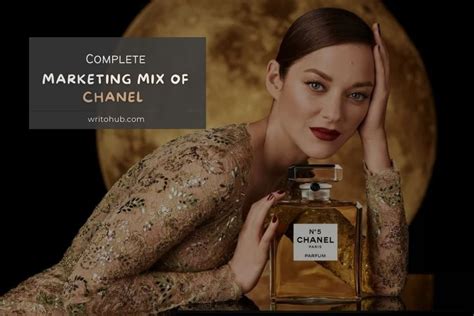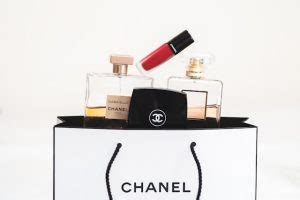competitive chanel model | chanel in marketing competitive chanel model The brand employs a strategic pricing model while ensuring a unique and personalized consumer journey. . Maintaining a Competitive Edge. Chanel employs several . Step 1: Go to Amazon’s International Shopping Portal. The Amazon store has an international section that only displays items available to ship internationally. You can browse this catalog to look for the products you want to buy. Step 2: Create an Account and Set Up Your 1-Click Malta Address.
0 · chanel no 5 marketing strategy
1 · chanel marketing strategy explained
2 · chanel luxury marketing strategy
3 · chanel in marketing
4 · chanel fashion magazine marketing
5 · chanel digital marketing strategy
6 · chanel brand strategy
7 · chanel advertising strategy
$79.99
The brand employs a strategic pricing model while ensuring a unique and personalized consumer journey. . Maintaining a Competitive Edge. Chanel employs several . Chanel’s marketing strategy demonstrates a keen understanding of contemporary trends and technological advancements. This is evident in their cutting-edge advertising .2023 financial results driven by strong growth across all product lines, demonstrating the desirability of CHANEL’s creations. Revenues of .7 billion, up 16% versus 2022 on a . Competitors Of Chanel. Louis Vuitton, Gucci, Burberry, Dior, and other high-end fashion brands are among Chanel’s main rivals in this market. 1) Louis Vuitton. Louis Vuitton Malletier is a French luxury fashion house, also .
A PESTEL analysis is a strategic management framework used to examine the external macro-environmental factors that can impact an organization or industry. In this article, we will do a . Chanel is a French luxury fashion house founded in 1910 by Coco Chanel. The company is headquartered in London and specializes in women’s ready-to-wear, luxury goods, and accessories. Chanel is well known for its No. . Unique selling proposition and niche premium pricing are the other characteristics of Chanel, which constructed competitive advantage over the competitors. Chanel always . Key Takeaways. Chanel’s target market has evolved significantly since its inception, adapting to shifts in consumer demographics and market trends. The brand’s customer base primarily consists of affluent women aged .

1. Find a sustainable way to differentiate yourself. One of the biggest lessons that we can take from the Chanel Marketing strategy is how a differentiation strategy should be . In addition to building trust, Chanel’s content is never about hard selling its products, but always about the stories. Among its competitors, Dior, Hermes and Louis Vuitton, Chanel probably has the most engaging content, with innovative video shorts featuring the likes of Pharrell Williams and Keira Knightley. The brand employs a strategic pricing model while ensuring a unique and personalized consumer journey. . Maintaining a Competitive Edge. Chanel employs several strategies to maintain a competitive edge in the luxury fashion industry. First, it relies on a strong heritage, with a brand story that emphasizes elegance and timelessness. . Chanel’s marketing strategy demonstrates a keen understanding of contemporary trends and technological advancements. This is evident in their cutting-edge advertising campaigns, collaborations with modern influencers, and strategic use of digital platforms.
2023 financial results driven by strong growth across all product lines, demonstrating the desirability of CHANEL’s creations. Revenues of .7 billion, up 16% versus 2022 on a comparable basis at constant currency. Operating profit of ,407 million, an increase of 10.9% compared to 2022. Competitors Of Chanel. Louis Vuitton, Gucci, Burberry, Dior, and other high-end fashion brands are among Chanel’s main rivals in this market. 1) Louis Vuitton. Louis Vuitton Malletier is a French luxury fashion house, also known as Louis Vuitton, established in 1854.
A PESTEL analysis is a strategic management framework used to examine the external macro-environmental factors that can impact an organization or industry. In this article, we will do a PESTEL Analysis of Chanel. Chanel is a French luxury fashion house founded in 1910 by Coco Chanel. The company is headquartered in London and specializes in women’s ready-to-wear, luxury goods, and accessories. Chanel is well known for its No. 5 perfume and “Chanel Suit”. Coco Chanel was born in Saumur, France, in 1883. Unique selling proposition and niche premium pricing are the other characteristics of Chanel, which constructed competitive advantage over the competitors. Chanel always constructed its brand strategy in the frame of brand values. Key Takeaways. Chanel’s target market has evolved significantly since its inception, adapting to shifts in consumer demographics and market trends. The brand’s customer base primarily consists of affluent women aged 25-45, with a strong presence in major metropolitan areas.
1. Find a sustainable way to differentiate yourself. One of the biggest lessons that we can take from the Chanel Marketing strategy is how a differentiation strategy should be implemented. In addition to building trust, Chanel’s content is never about hard selling its products, but always about the stories. Among its competitors, Dior, Hermes and Louis Vuitton, Chanel probably has the most engaging content, with innovative video shorts featuring the likes of Pharrell Williams and Keira Knightley. The brand employs a strategic pricing model while ensuring a unique and personalized consumer journey. . Maintaining a Competitive Edge. Chanel employs several strategies to maintain a competitive edge in the luxury fashion industry. First, it relies on a strong heritage, with a brand story that emphasizes elegance and timelessness. .
Chanel’s marketing strategy demonstrates a keen understanding of contemporary trends and technological advancements. This is evident in their cutting-edge advertising campaigns, collaborations with modern influencers, and strategic use of digital platforms.2023 financial results driven by strong growth across all product lines, demonstrating the desirability of CHANEL’s creations. Revenues of .7 billion, up 16% versus 2022 on a comparable basis at constant currency. Operating profit of ,407 million, an increase of 10.9% compared to 2022. Competitors Of Chanel. Louis Vuitton, Gucci, Burberry, Dior, and other high-end fashion brands are among Chanel’s main rivals in this market. 1) Louis Vuitton. Louis Vuitton Malletier is a French luxury fashion house, also known as Louis Vuitton, established in 1854.
A PESTEL analysis is a strategic management framework used to examine the external macro-environmental factors that can impact an organization or industry. In this article, we will do a PESTEL Analysis of Chanel. Chanel is a French luxury fashion house founded in 1910 by Coco Chanel. The company is headquartered in London and specializes in women’s ready-to-wear, luxury goods, and accessories. Chanel is well known for its No. 5 perfume and “Chanel Suit”. Coco Chanel was born in Saumur, France, in 1883. Unique selling proposition and niche premium pricing are the other characteristics of Chanel, which constructed competitive advantage over the competitors. Chanel always constructed its brand strategy in the frame of brand values. Key Takeaways. Chanel’s target market has evolved significantly since its inception, adapting to shifts in consumer demographics and market trends. The brand’s customer base primarily consists of affluent women aged 25-45, with a strong presence in major metropolitan areas.
gucci card holder doraemon
chanel no 5 marketing strategy
chanel marketing strategy explained
chanel luxury marketing strategy

Amrut Amalgam Peated Malt Whisky. Notify. WB130350. Market Value. The 90-day average of auction buyer prices. --- Ask Price. The lowest retail price at which this whisky is currently available. --- Rating. The average of all Whiskybase ratings ignoring the highest and lowest ratings. 82 /100. Availability.
competitive chanel model|chanel in marketing


























